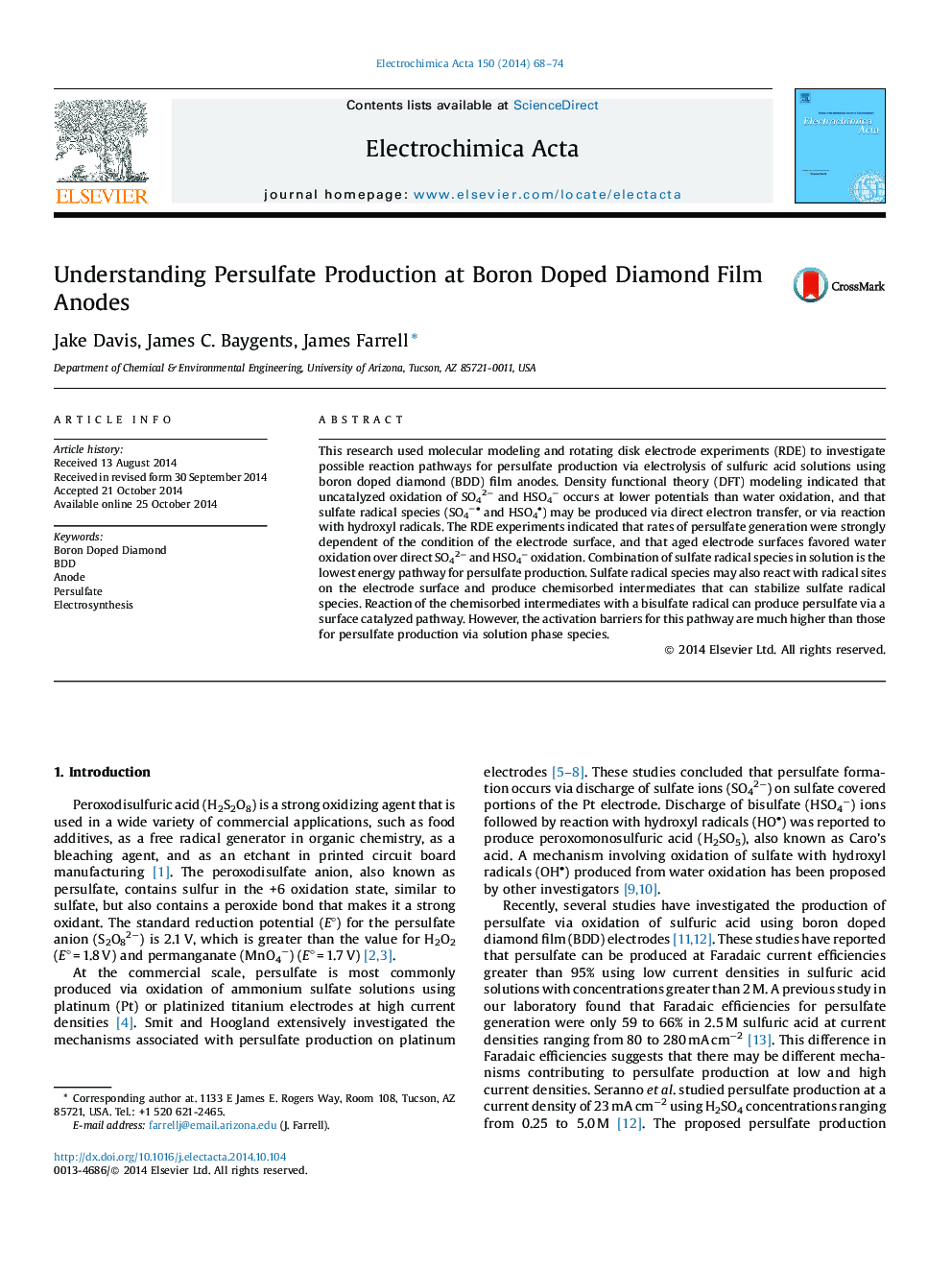| Article ID | Journal | Published Year | Pages | File Type |
|---|---|---|---|---|
| 6612686 | Electrochimica Acta | 2014 | 7 Pages |
Abstract
This research used molecular modeling and rotating disk electrode experiments (RDE) to investigate possible reaction pathways for persulfate production via electrolysis of sulfuric acid solutions using boron doped diamond (BDD) film anodes. Density functional theory (DFT) modeling indicated that uncatalyzed oxidation of SO42â and HSO4â occurs at lower potentials than water oxidation, and that sulfate radical species (SO4â
- and HSO4
- ) may be produced via direct electron transfer, or via reaction with hydroxyl radicals. The RDE experiments indicated that rates of persulfate generation were strongly dependent of the condition of the electrode surface, and that aged electrode surfaces favored water oxidation over direct SO42â and HSO4â oxidation. Combination of sulfate radical species in solution is the lowest energy pathway for persulfate production. Sulfate radical species may also react with radical sites on the electrode surface and produce chemisorbed intermediates that can stabilize sulfate radical species. Reaction of the chemisorbed intermediates with a bisulfate radical can produce persulfate via a surface catalyzed pathway. However, the activation barriers for this pathway are much higher than those for persulfate production via solution phase species.
- and HSO4
- ) may be produced via direct electron transfer, or via reaction with hydroxyl radicals. The RDE experiments indicated that rates of persulfate generation were strongly dependent of the condition of the electrode surface, and that aged electrode surfaces favored water oxidation over direct SO42â and HSO4â oxidation. Combination of sulfate radical species in solution is the lowest energy pathway for persulfate production. Sulfate radical species may also react with radical sites on the electrode surface and produce chemisorbed intermediates that can stabilize sulfate radical species. Reaction of the chemisorbed intermediates with a bisulfate radical can produce persulfate via a surface catalyzed pathway. However, the activation barriers for this pathway are much higher than those for persulfate production via solution phase species.
Related Topics
Physical Sciences and Engineering
Chemical Engineering
Chemical Engineering (General)
Authors
Jake Davis, James C. Baygents, James Farrell,
